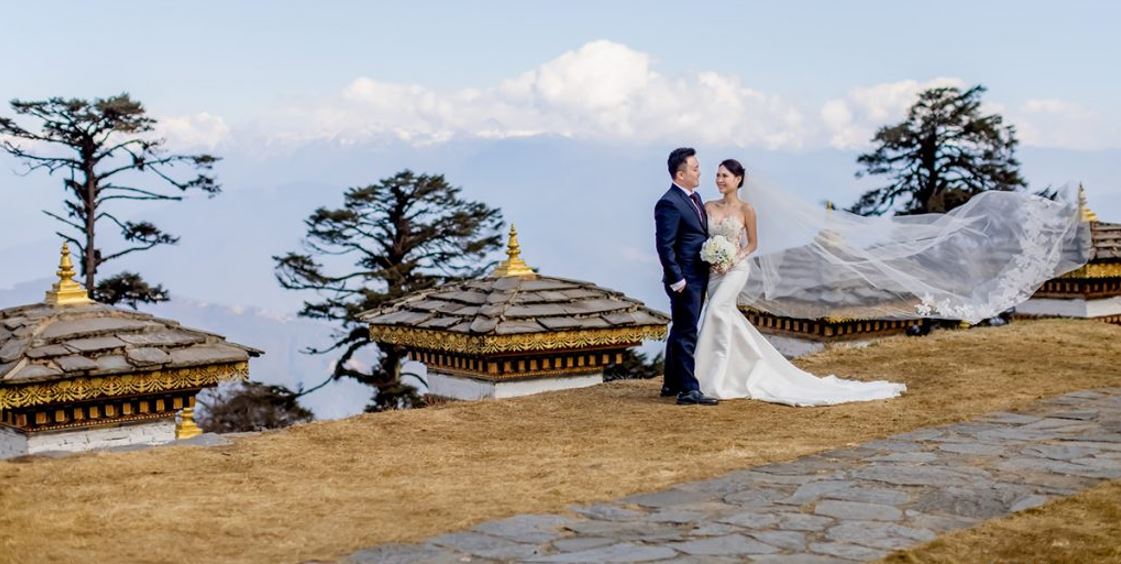Traditional Bhutanese Wedding Tour
The Traditional Bhutanese Wedding tour package provides our client an opportunity to experience a local wedding in Bhutan. The wedding ceremony featuring a number of religious rites performed by Buddhist monks and lamas. Traditional Your wedding can be a combination of spiritual Bhutanese rites and western elements such as ring exchange, or more elaborate local features such as masked dances, archery, offering of butter-lamps, and special fertility blessings. This tour also includes visits to the western valleys of Paro, Punakha, and Thimphu. This includes visiting ancient fortresses, temples, monasteries, farmhouses, and meeting with the locals in rural villages.

Find below series of events that take place during the traditional Bhutanese wedding tour in Bhutan.
Firstly important is to find out an auspicious date as per the calendar. Depending on your wishes you can conduct the village ceremony in Monastery.
Lhabsang ritual
This Lhabsang ritual ceremonial is regarded as important. The early start on an auspicious day will be the right time to start. Monks and lamas will chant Bhutanese mantras. They burn incense and make offerings to the local deities. Prayers to local deities will be good and happiness to the bride and groom.
The lighting of Butter Lamps
“Thrisor”
The Head lama and some monks would perform “Thrisor service”. This purification ritual is cleansing both the bride and groom’s body, speech, mind, & soul. That will cleanse their sins.
Changphoed
Traditionally locally brewed alcohol or Ara is offered to the local deities. The remaining part of locally brewed alcohol or ara will be served to the bride and groom in a local wooden cup.
The Changphoed is to keep the close bond relationship. Finally, they will share for the rest of their lives. The exchange of wedding rings will be done.
Tsepamey Choko
It is performed by the Head Lama to the God of Longevity. The ritual signifies the blessings granted to the couple for a lifelong marriage.
Zhugdrey Phunsum Tshogpa
It is a food-sharing ritual. It is to offer fruits and food to local deities, then to God, and finally to the guests who are attending the ritual.
Dhar Nyanga presentation
The final ceremony will be the presentation of the “Dhar” to the bride and groom. Wishing happy married life.
After all ritual ceremonies, the honeymoon vacation starts with visiting many places in Paro, Thimphu, and Punakha. Professional photo sessions can be done here in Bhutan. Visiting Taksang Monastery will be stunning with your dress or our Bhutanese outfits.
